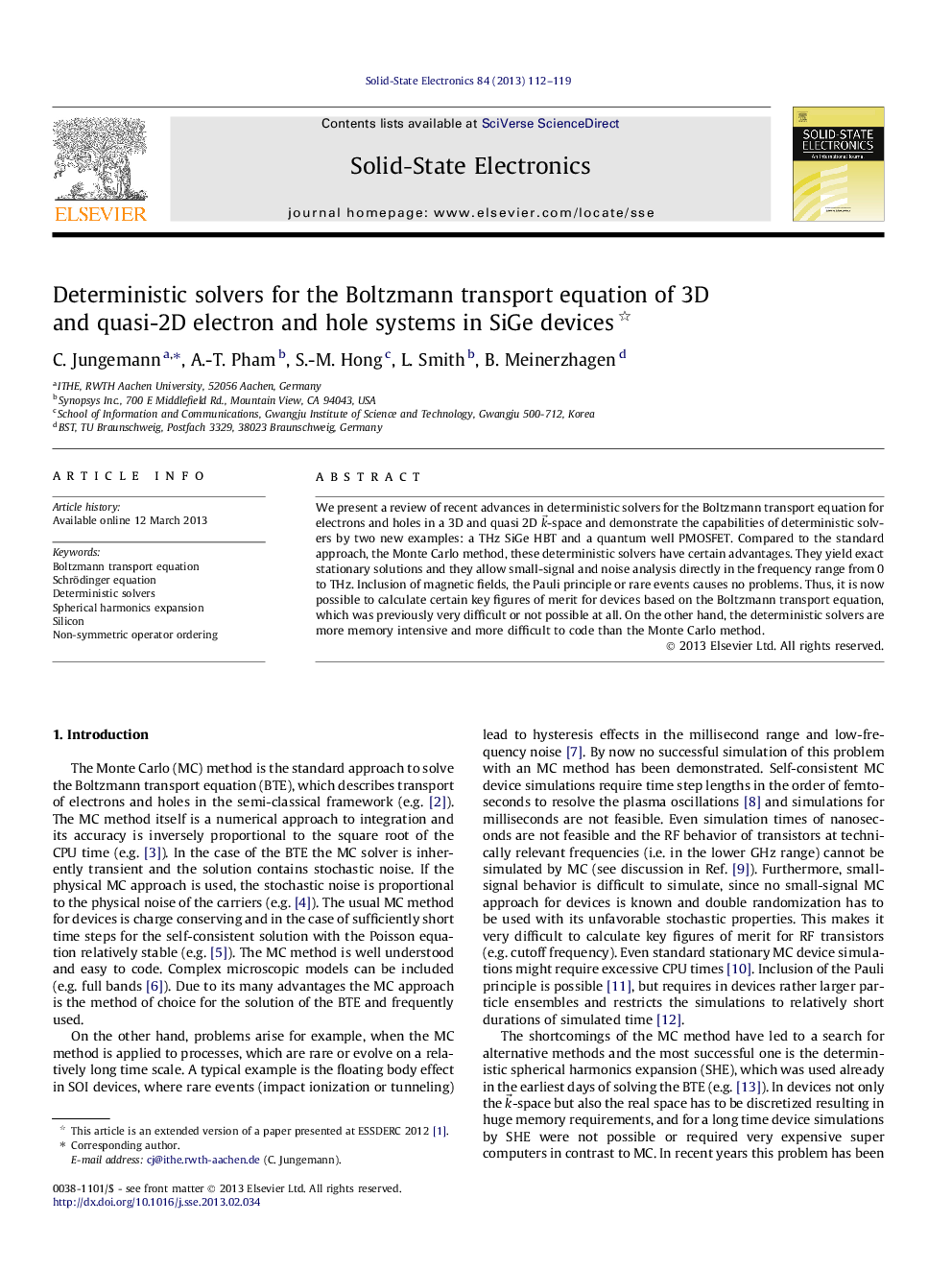| Article ID | Journal | Published Year | Pages | File Type |
|---|---|---|---|---|
| 747991 | Solid-State Electronics | 2013 | 8 Pages |
We present a review of recent advances in deterministic solvers for the Boltzmann transport equation for electrons and holes in a 3D and quasi 2D k→-space and demonstrate the capabilities of deterministic solvers by two new examples: a THz SiGe HBT and a quantum well PMOSFET. Compared to the standard approach, the Monte Carlo method, these deterministic solvers have certain advantages. They yield exact stationary solutions and they allow small-signal and noise analysis directly in the frequency range from 0 to THz. Inclusion of magnetic fields, the Pauli principle or rare events causes no problems. Thus, it is now possible to calculate certain key figures of merit for devices based on the Boltzmann transport equation, which was previously very difficult or not possible at all. On the other hand, the deterministic solvers are more memory intensive and more difficult to code than the Monte Carlo method.
► Deterministic solvers for the Boltzmann equation are feasible for device simulation. ► They are superior to the stochastic Monte Carlo method in many aspects. ► They are numerically robust in the case of quasi 2D and 3D particle gases. ► They yield exact stationary and small-signal solutions of the Boltzmann equation. ► Electronic noise can be calculated in the whole technically relevant frequency range.
